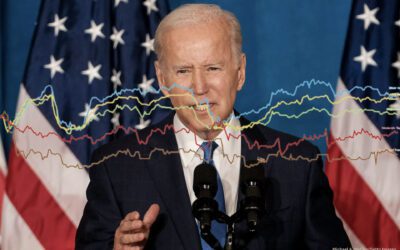Barack Obama won because he recognized a New America. The President managed only 39 percent of the white vote, the lowest white percentage recorded for a winning national candidate, and suffered a 12-point swing against him among independent voters, but won both the popular vote and an Electoral College landslide by energizing voters we describe as the Rising American Electorate. These voters—unmarried women, young people, Hispanics, and African Americans—not only delivered huge margins to the incumbent—nearly matching 2008 totals among unmarried women and African Americans, exceeding 2008 among Hispanics—but also turned out in ever greater numbers. Collectively, these voters made up nearly half (48 percent) of the 2012 electorate according to national exit poll estimates, up four points from 2008, including a 3 point increase among unmarried women.
This outcome was not inevitable. It reflects conscious and deliberate decisions by both campaigns, who made different calculations about what the 2012 electorate would ultimately look like and executed a strategy accordingly. For the first time, a national campaign ran advertising explicitly targeting unmarried women, a group who, heretofore, was too often overlooked by national candidates, despite the fact that they account for 26 percent of the voting age population. While much has been said about the gender gap in this campaign, both married men and married women voted for Romney (53 to 46 percent Romney among married women; 58 to 40 percent Romney among white married women). Barack Obama won the women’s vote and thereby won the White House by rolling up a huge margin (67 to 31 percent) among unmarried women. The marriage gap—the difference in margins between married and unmarried women—dwarfs the gender gap by 25 points (43 and 18 percent), as it has for the last three presidential elections.
Partnering with Women’s Voices, Women Vote Action Fund, Democracy Corps and Greenberg Quinlan Rosner conducted a survey of 1,001 voters in the 2012 election to explore the role of the Rising American Electorate. This survey was conducted November 5-7 and carries a margin of error of +/- 3.10 points at a 95 percent confidence interval.
By Holding the RAE, Obama Holds the White House
Barack Obama ultimately won a narrow popular margin (50 to 48 percent) and a total of 332 Electoral College votes. This is a victory won by holding voters in the Rising American electorate. Among non-RAE voters, President Obama lost 9 points in the margin. Although he did not quite reach his 2008 totals among RAE voters, the President’s margins are huge.

Within the RAE, Obama’s support fell among youth, and white voters under age 30 preferred Romney 52 to 44 percent. This reflects a change from 54 percent Obama, 44 percent McCain among white voters under age 30 in 2008. However, Obama held unmarried women, coming very close to what he achieved in 2008, and stretched his support among Hispanic voters to 71 percent, while capturing 93 percent of the African American vote.

The Rising American electorate not only delivered huge margins to the President, but also turned out for the President as well. According to estimates in the National Exit survey, voters in the RAE make up nearly half (48 percent) of the 2012 electorate. The number of unmarried Americans, male and female, accounted for the largest change in the composition in the electorate–jumping 6 points to 40 percent in 2012. We also see a smaller increase in the youth and Hispanic contribution.

By both their intensity in the margin and their intensity in the turnout, the voters of the Rising American Electorate delivered this victory to Barack Obama. This result vindicates a campaign decision made by the Obama team fairly early in the election cycle to focus much of their energy on rallying the New America. At the same time, the Romney campaign drew a different conclusion about what the 2012 electorate would look like. Focused almost obsessively on their support among Independent voters, which they carried by five points on Election Day, they believed they could absorb losses in the New America. Hence, we heard language about “self-deportation” and a commitment to shut-down Planned Parenthood. What beat them, in the end, was basic math and a failure to address the change in demography of the country.
Marriage Gap Continues to Drive Elections
President Obama won women by a 55 to 44 percent margin and lost men by a 45 to 52 percent margin, leaving an 18-point gender gap, up from 12 points in 2008. But this difference is dwarfed by the marriage gap—the margin between married and unmarried women. Married women supported the Republican candidate in 2012 by a comfortable six-point margin. It is Obama’s huge victory among unmarried women that delivered the women’s vote and with it, the White House. There is a 43-point difference in the margin between married women and unmarried women, a number which exceeds the gender gap by a factor of two.

This marriage gap is not new. Marital status has been driving how voters vote—and, whether they vote—for several election cycles. What is different about this cycle is that the Obama campaign was the first national campaign to recognize the importance of unmarried women and target advertising and messaging explicitly to these voters. This proved a smart investment.

At the congressional level, this election cycle saw little change. Part of this reflects the vagaries of redistricting, which protected a significant number of Tea Party Republicans who might have otherwise had a brief career in government. Looking specifically at the raw total Democratic vote at the congressional level, the Democratic percentage increased from 48 percent in 2010[1] to a 50.2 percent majority in 2012.[2] Much of this improvement was driven by unmarried women. In 2010, Democratic support among unmarried women dropped significantly, and Democrats lost the overall vote among women and the Congress. In 2012, Democratic support among unmarried women bounced back sharply.

Winning Agenda
President Obama won an election in which the economy was the leading issue (75 percent identified this as their top priority in the national exit survey) and in which his opponent enjoyed a small advantage on this issue and the even bigger advantage on “creating jobs.” Part of the reason why President Obama overcame these obstacles is that while voters remained troubled over the economy, they also believed the economy was improving and that the President needed more time. More important, the President also laid out a future agenda that spoke directly to the lives voters were leading, particularly RAE voters. In contrast, Romney was perceived as out of touch.
We see this play out in voters’ reasons for supporting—and opposing—the candidates. For Obama, the leading reason to support him is that he “brought America through the economic crisis and needs more time.” That is matched by his plans to improve the economy and have the wealthy pay more taxes. Interestingly, for all the political baggage, the second leading reason at 30 percent is the President’s health care plan. The health care plan itself, while still drawing mixed reviews overall, is significantly better received among voters on Election Day than has been the case in the past and among unmarried women and RAE voters enjoys broad support. We expect this support to grow as the advantages of health care reform come on line over the next few years.
Reasons to oppose Romney organize around his support for the wealthy, his comments about the 47 percent and being out of touch. Voters in the Rising American Electorate are even more likely to identify these reasons, as many of these voters believed in our pre-election focus groups that the Romney’s attack on the 47 percent was aimed squarely at them.

The War on Women
Late in the election cycle, conservative pundits pushed back on the Democratic focus on issues like Planned Parenthood and contraception, arguing America’s women were more focused on the economy issues than on access to birth control. That was (and is) true, but fails to understand the broad nature of the argument Democrats were making and women’s interpretation of that argument. These issues are not narrowly about the right to abortion and birth control, but also about the economy. Many women, particularly unmarried women, rely on Planned Parenthood clinics for their access to affordable health care. The pay equity issue, which provided a vivid moment in the second debate, could not be more relevant to a family surviving with a single income.
In this survey, these issues comprise the second leading single reason to vote for Barack Obama among unmarried women, along with protecting Social Security and Medicare. They also make up the second leading reason for opposing Mitt Romney. There is no question that this narrative played a prominent role in driving the President’s margin among unmarried women.


Looking Ahead
The Rising American Electorate played a definitive role in reelecting Barack Obama and electing Democrats down ballot. Their margin and their turnout were not, however, pre-destined; these voters were targeted by the Obama campaign. Democratic support fell to 60 percent among unmarried women in the 2010 election cycle and even Obama was south of 60 percent among these voters at the beginning of this year. Their loyalty was earned this year and will need to be earned next time as well.
Looking ahead to their post-election agenda, this is not a group looking for “austerity.” Indeed, their issues are explicitly progressive and investment-oriented. The RAE’s most important priority for the President and the Congress is “investing in education,” followed by “protecting Social Security and Medicare.” Pay equity is the third leading agenda item among unmarried women. It is work in these areas that will likely produce similar electoral results in 2014 and 2016.





